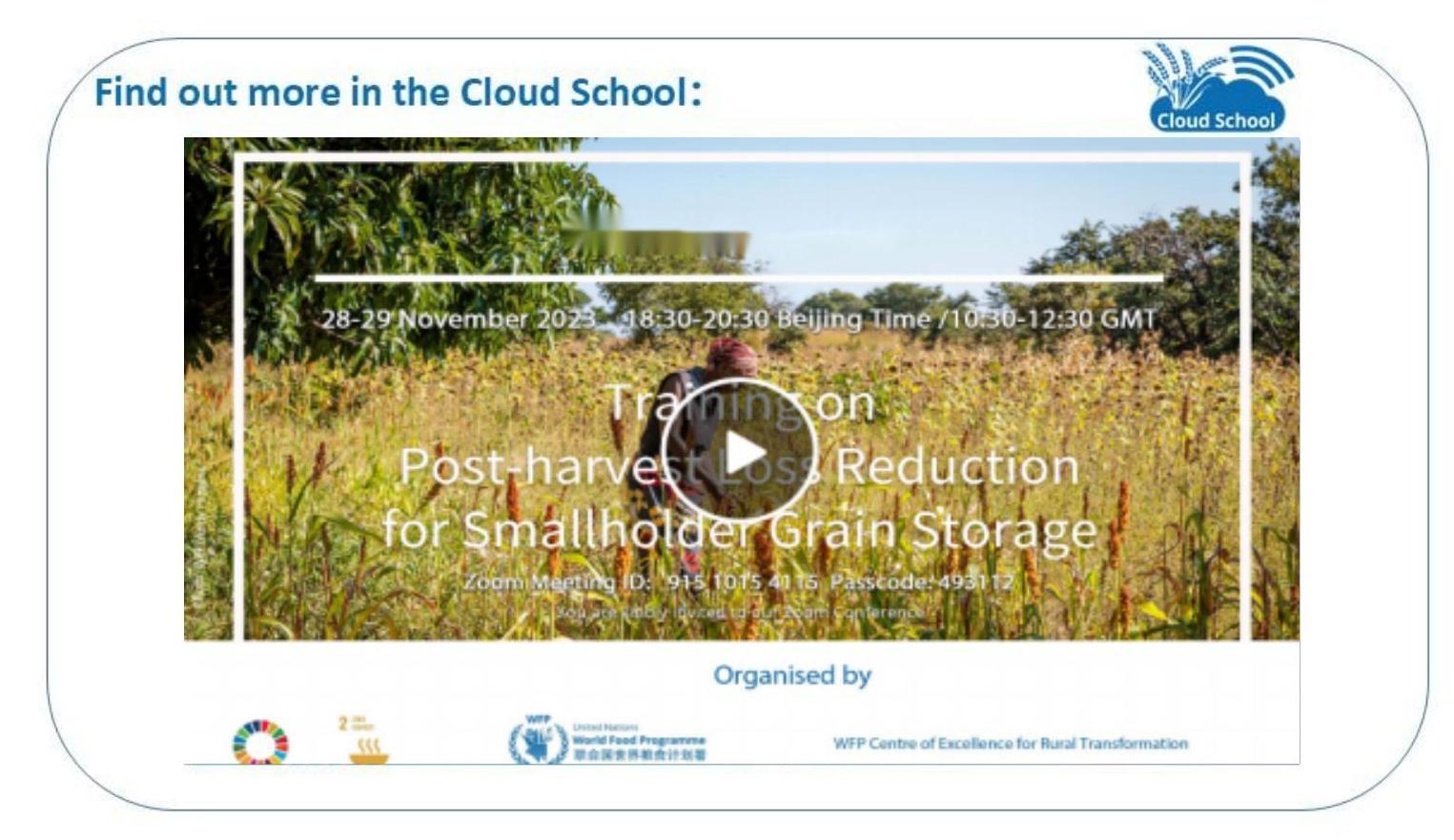INTRODUCTION
Post-harvest losses have significant nutritional, health, and financial impacts for both consumers and farmers, disproportionately affecting women, who are largely responsible for managing post-harvest drying, cleaning, and storage. Inappropriate postharvest storage is one of the main causes of food loss at farm level. In some developing countries, smallholder farmers regularly lose 40 percent of their harvest due to inadequate storage.
WFP Centre of Excellence for Rural Transformation (WFP China COE) organised an online Training on Post-harvest Loss Reduction for Smallholder Grain Storage to share technologies, equipment and solutions, including methods of quality management and pest control, to support the post-harvest loss reduction for smallholder grain storage, joined by 72 participants from 27 developing countries. The training was moderated by Dr. Sha Sha, Programme Policy Officer for South-South Cooperation of WFP China.
The opening remarks was delivered by Mr. Damien Fontaine, Programme Policy Officer and SAMS and PHL Team Lead of Resilience and Food Systems Service of WFP Headquarters. He highlighted that South-South and Triangular Cooperation is crucial for engaging strategic partners to address post-harvest loss challenges by sharing knowledge, experiences, and technical expertise. WFP’s Food Systems and Smallholder Support unit values its collaboration with WFP China COE and looks forward to leveraging China's expertise to expand joint initiatives in post-harvest loss reduction.
HIGHLIGHTS OF PRESENTATIONS
Mr. Yan Xiaoping, Researcher and Chief Technical Officer of Sinograin Chengdu Storage Research Institute, delivered the presentation on experience, technology and equipment of smallholder grain storage in China. The presentation presented the analysis of smallholder’s grain storage losses, shared experience and technology of smallholder grain storage in China, and introduced smallholder storage equipment and its utilization, mainly including the small steel silo.
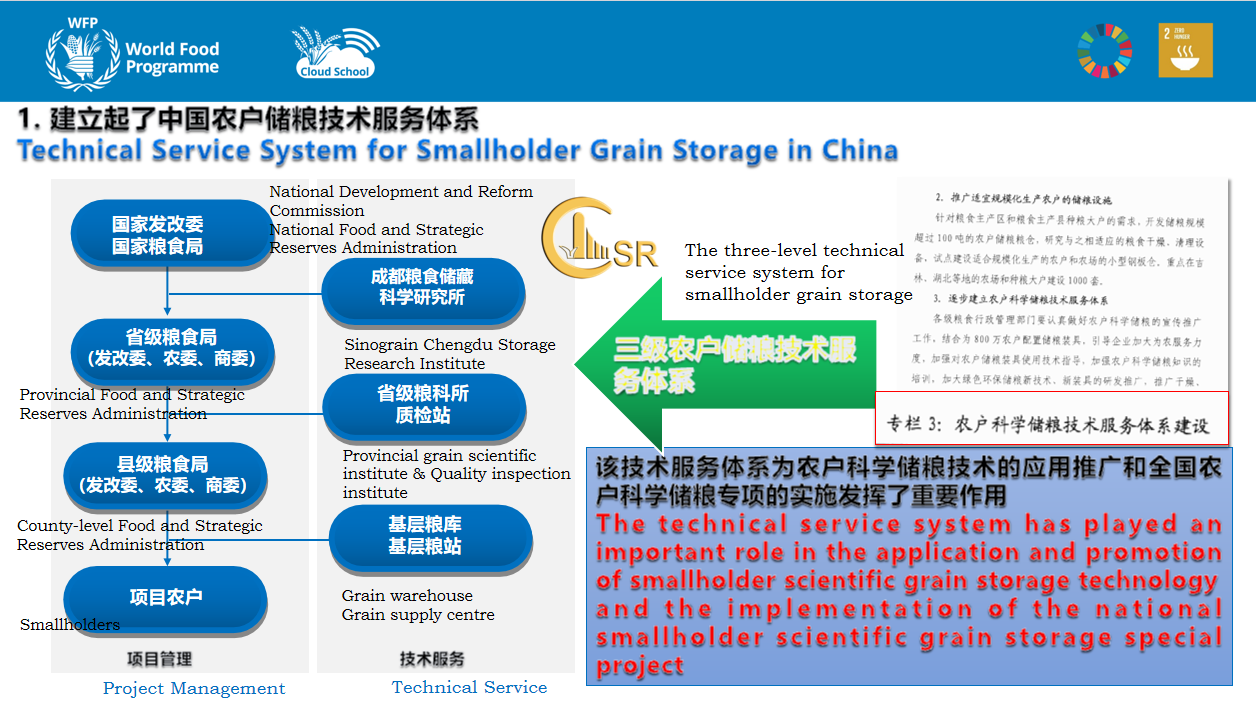
Before 2006, as around 250 million tons of grain were stored by smallholders every year, the annual loss of smallholder grain storage was about 20 million tons each year, which was equal to the annual grain production of Shanxi, Gansu, Ningxia, and Qinghai Provinces in China. With the improvement of rural living conditions, smallholder’s grain storage losses due to rodent infestation have been reduced significantly to 3% in 2023.
The three-level technical service system for smallholder grain storage in China plays an important role in the application and promotion of scientific smallholder grain storage technology and implementation of the national scientific smallholder grain storage program. The service system includes the Sinograin Chengdu Storage Research Institute at the national level, which provides the technical support for National Development and Reform Commission and National Food and Strategic Reserves Administrationthe, grain scientific research institutes and quality inspection institutes at the provincial level supporting the food and strategic reserves administration in the region, and local grain reserves and grain supply centres supporting the county-level food and strategic reserves administrations.
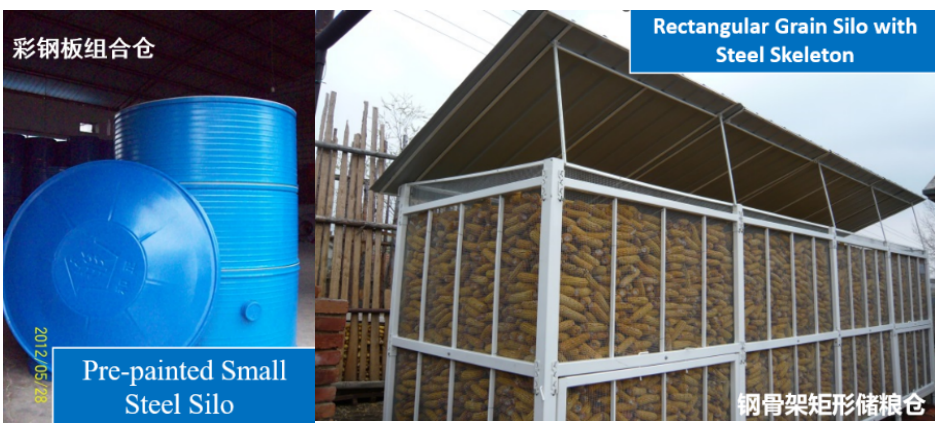
In China, main grain storage equipment used by smallholders includes pre-painted small steel silo and rectangular grain silo with steel skeleton. The pre-painted small steel silo is the major grain storage equipment for smallholders with limited arable land in China, which is developed by the Sinograin Chengdu Storage Research Institute. Large-scale farmers' grain storage equipment mainly includes steel silos for farmers, hexagonal ring silo with steel skeleton, and combined short-term storage silo for high-moisture corn ear. By using the new equipment, the grain storage loss rate decreased from 8%-10% to less than 2 % in the demonstration site. The national special implementation actions for smallholder grain storage has been started since 2007. The promotion and application of scientific grain storage equipment for smallholders are 30% funded by the central government, 30% funded by the local government and the rest is self-managed by smallholders.
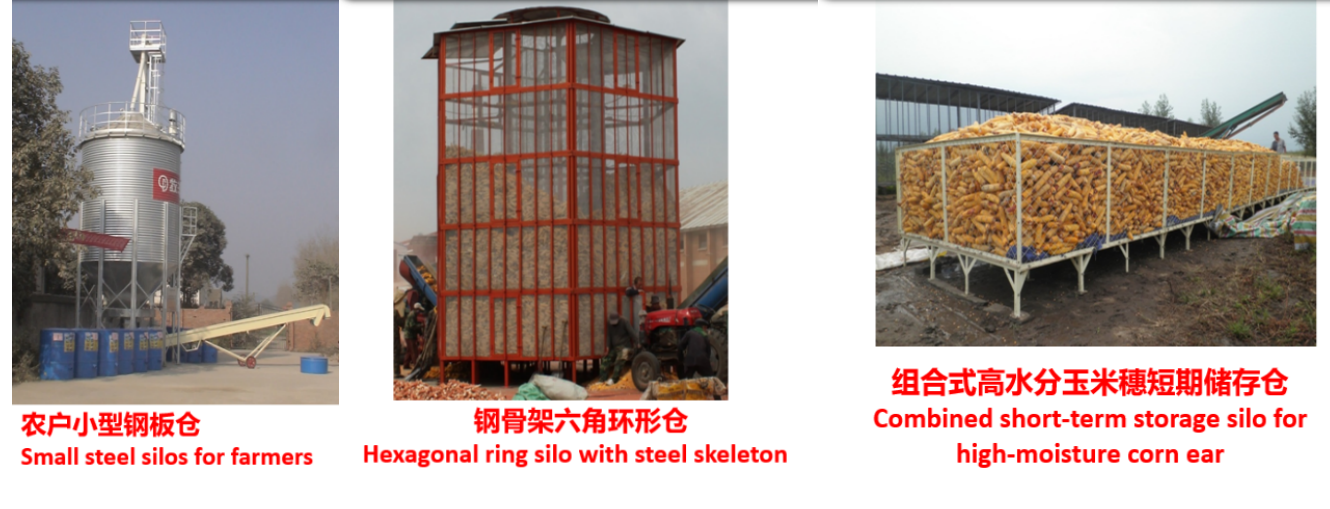
To access the presentation slides, please click here: Experience, Technology and Equipment of Smallholder Grain Storage in China
Mr. Xu Shengwei, Senior Engineer of Sinograin Chengdu Storage Research Institute, shared the presentation on quality management and pest control for smallholder grain storage. The presentation highlighted grain features and basic requirements of safe smallholder grain storage, introduced storage methods of major grains, and shared common pest prevention and control methods for smallholders.
There are rules of metabolic activities of grains: higher the water ratio, stronger the breathing; higher the temperature, stronger the breathing. The standards of safe water ratio for storage are different for paddy, wheat and corn, while the temperature below 18℃ would begood for quality control of all of them. The post-ripening period is another feature of grain, especially wheat and corn. The dry, clean and full grain could meet the basic requirements of grain storage. There are also requirments about warehouse and equipment, including methods of seperation and periodic check.
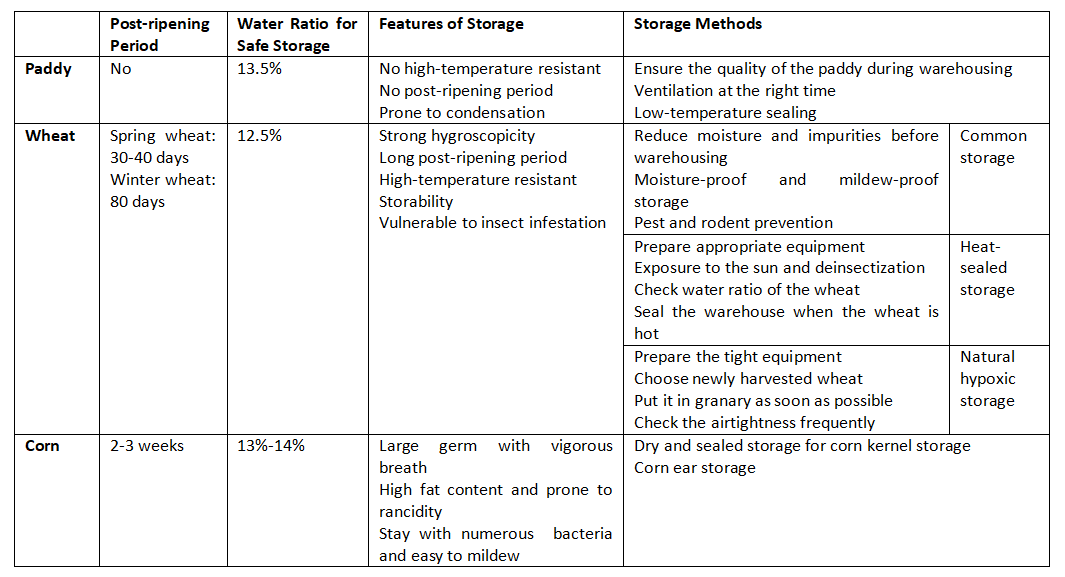
· Pest control
There are 226 species of stored grain pests, including beetles, moths and mites. The common pests in stored grains include motschulsky, fabricius, herbst, linnaeus and olivier. The most harmful stage of the pest is the stage of larvae. The physical methods of controlling stored grain pests are prioritized, including: 1) Exposure to sunlight 2) Covering the grain surface 3) Using the sieve 4) Using the windmills. The chemical control method is mainly pesticide.
· Prevent rodent infestation
To prevent grain storage from the rodent infestation, the grain equipment is crucial. Proper instruments could be used to prevent rodent infestation. Raising cat is the simplest and most effective way for farmers to prevent mouses. The local-permitted rodenticide is the chemical method.
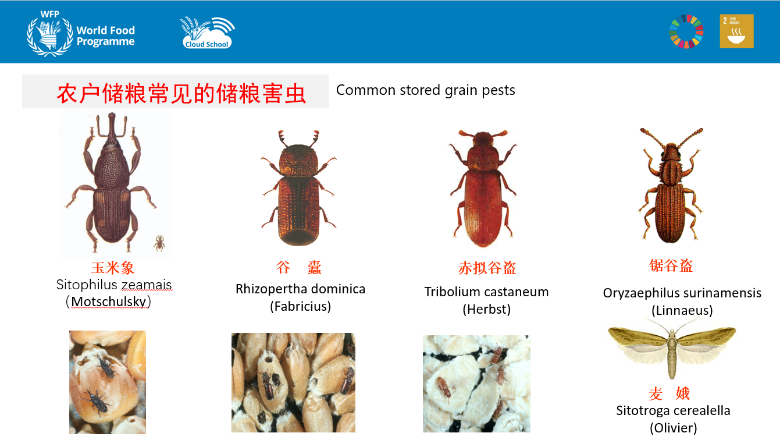
· Anti-mildew
Drying is the most important anti-mildew measure for smallholder grain storage. Grains must be dried at the safe moisture level for the safe storage. Different kinds of mold are widely found in a variety of grains. There are specific measures responding to moldy grains in different situations. The cause of moldy grain includes increasing of water content, condensation of grain bulks, excessive levels of impurities, pest, package, damped grain at the bottom,etc.
To access the presentation slides, please click here: Quality Management and Pest Control for Smallholder Grain Storage
Related Link: Training on Post-harvest Loss Reduction from Smallholder Grain Storage
Related Courses in Cloud School:

